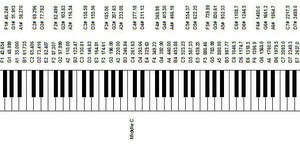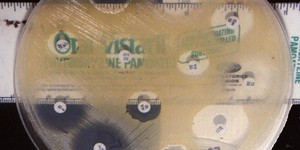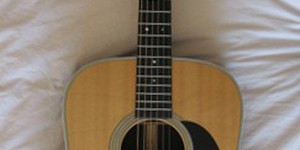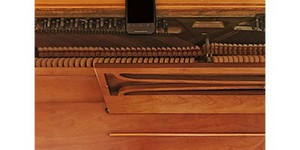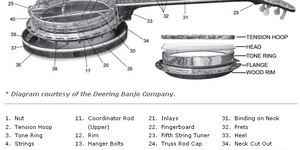Ninth Grade, Music Science Projects (19 results)
While everyone else is paying attention to what they see, maybe you're focusing on what you can hear. Explore the physics of sound, musical instruments, and even how people respond when they hear music.
|
Select a resource
Sort by
|
This is a rockin' project for guitarists with an interest in the physics behind the music. Have you ever wondered why the pitch of the note changes when you fret the string? You can find out for yourself with this project on the fundamental physics of stringed instruments.
Read more
Featured
Have you heard that garlic powder is supposed to inhibit the growth of bacteria? Which do you think would make a better disinfectant: a solution of garlic powder or a solution of bleach? This project shows you a straightforward way to compare the effectiveness of different disinfectants (or other antimicrobial agents), by measuring zones of inhibition on a culture plate.
Read more
Do you love to make music, but do not have access to all the instruments you would love to play? Check out this fun science fair project about the physics of musical sound production. You will make musical instruments with drinking straws, one for each note on a one-octave major scale. Can you figure out the right lengths for a series of straw "oboes" in order to play a musical scale?
Read more
New
Drones are small, fast, and maneuverable - this can make them very hard to knock down! Check out this Mark Rober video where he explores both how professional defense companies and some backyard YouTube engineers tackle the problem of knocking drones out of the sky. Can you take this engineering challenge on yourself? What methods can you devise to take down a drone? Which one works the best?
Drones can be expensive, and you probably do not want to risk damaging a $1,000 drone for your science…
Read more
In this project, you'll investigate the physics of standing waves on guitar strings. You'll learn about the different modes (i.e., patterns) of vibration that can be produced on a string, and you'll figure out how to produce the various modes by lightly touching the string at just the right place while you pick the string. This technique is called playing harmonics on the string. By the way, we chose a guitar for this project, but you can do the experiments using any stringed instrument, with…
Read more
This is a great project for a musician who is interested in the physics of stringed instruments. If you've ever played an acoustic guitar, you may have noticed that picking a single string can make one or more of the other (unpicked) strings vibrate. When this happens, it's called sympathetic vibration. What intervals lead to the strongest sympathetic vibrations? Find out for yourself with this project.
Read more
The renowned pianist Vladimir Horowitz once said, "The most important thing is to transform the piano from a percussive instrument into a singing instrument." In this project, you will learn how you can make piano strings sing using sympathetic vibrations. Find out which notes make another one sing the longest by measuring their sound intensities using a smartphone equipped with a sensor app.
Read more
New
Does your dog get bored when you are not home? Do you ever toss them a few treats right before you head out the door? What if you could keep them busy by automatically dispensing treats throughout the day? What about training them to sit in a certain place or even press a button by automatically rewarding them with treats? In this project you will build your own automatic dog (or cat, or other pet) treat dispenser that you can customize to react to different sensors.
Read more
In this project you'll learn how to make a piezoelectric pickup for acoustic guitar using inexpensive components. You can then connect your acoustic guitar to an amplifier, and record your own music. If you are interested in electronics and like playing acoustic guitar, this could be the perfect project for you.
Read more
The banjo's roots trace all the way over to Africa. The unique sound that a banjo makes depends, in part, on the resonator. The purpose of the resonator is to amplify and project the sound that is made by strumming and plucking the strings. In this music science fair project, you will experiment with a resonator on a banjo and see if you can hear the difference in sound.
Read more
If you like playing electric guitar, this could be a cool project for you. Have you ever wondered how an electric guitar works? In this project you'll wind one or more of your own electric guitar pickups and test them out in an inexpensive electric guitar. How will the sound change with the number of turns you use in the coil? Or with the strength of the magnets you use?
Read more
Does listening to classical music help or hinder concentration and performance on cognitive tasks? You'll need help from a teacher to design two short, age-appropriate worksheet tests for this experiment. The tests should be of equal difficulty. You'll also need the cooperation of several additional classroom teachers in order to test enough students (at least 50-100, see the Science Buddies resource: How Many Participants Do I Need?). Half the students will take test A while listening to…
Read more
Physical activity is needed for maintaining normal bone strength and mass. Can physical stress on finger bones during development lead to an increase in finger length? Check out this project to see how violin players are an example of a "natural experiment" that you can use to answer this question.
Read more
|
Explore Our Science Videos
Model a Lung Infection
Build a K'Nex® Differential
How to Build a Paper Speaker


